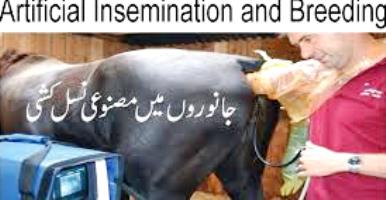
Artificial insemination in dairy cows book pdf in Urdu and English
Artificial insemination in dairy cows books pdf in Urdu and English. A. I have been used at the University of Missouri’s Dairy Herd since July 1, 1937. Over the past 18 months, this method of inseminating dairy cows has yielded such encouraging results that about 100 dairies have adopted the practice. Farmers in Missouri, cooperating with the Department of Dairy Husbandry, have provided records showing that there are approximately 500 cows per calf whose average service rate is in line with natural service.
READ MORE
Dairy Farmers app Record Book and in Urdu
Free livestock management software and app
A study of the breeding performance of the Missouri Station herd and the use of 21 saws over a period of about 25 years shows that there are an average of 1.53 services per calf for natural breeding. Since February 193, when the herd was divided into two equal groups, one by natural and the other by artificial insemination, a total of about 100 cows settled in the calf, required for natural breeding for each pregnant woman. The average number of services was 1.56. And 1.40 for artificial insemination.
In addition, many “shy breeders” have been resettled through artificial insemination through double pregnancy.
ADVANTAGES OF ARTIFICIAL IN1SEMINATION
1. The usefulness of high seas can be multiplied many times. Proven sawmills with the ability to move characters for high milk and butter production can be used to raise hundreds of cows annually. Where cooperative breeding organizations have been formed, the use of such oxen can be extended to a large number of dairy herds.
2. Small breeders who need to purchase a bull (often of middle breed) in their own resources as needed, can participate in the use of high-quality bulls at low cost through breeding and use of artificial insemination. Costs.
3. The ability of the bull to move can be determined quickly and efficiently. Young, unproven bulls should be used sparingly until their ability to deliver is demonstrated. This is easily accomplished where the sirens are used cooperatively and at best no dairy herd will have more than a few daughters of such bulls.
4. The risk of spreading genetic diseases (such as trichomoniasis) is reduced materially. This is important even though such diseases are relatively rare.
5. Precious Cyrus who is able to serve the cow due to injury may continue to serve.
6. Year-round cows and small cows can be reared for large, heavy oxen without the risk of injury.
7. Due to regular semen examination, infertile bulls are more likely to be detected sooner than natural breeding. Similarly, abnormalities in a cow’s genital tract that can lead to shy growth can be discovered first.
8. In most cases better breeding and calf records will be kept. This is especially true in organized race units where one man is responsible.
9. The line breeding and development of some large families of high-quality dairy cattle is possible within a community.
10. Reconciliation of survivors, though located hundreds of miles away, is possible.
11. Studying the breeding issues of dairy farmers participating in the breeding program and cooperating in large numbers should bring out the best collective spirit for the development of the dairy industry.
Disadvantages of artificial insemination
There are some disadvantages to artificial insemination in dairy cattle that should be recognized by anyone planning to use this method.
1. Artificial insemination requires a well-trained operator and specialized equipment.
2. It requires a little more time than natural services, which limits its use to large herds or well-organized cooperative projects.
3. All tools and equipment used should be clean or the infection may spread. Appropriate facilities for cleaning equipment should be available.
4. Prolonged use of sawdust in this manner may result in less purchase of bullocks by small breeders and may result in loss of income to breeders.
Artificial estimation technique in dairy cows
Artificial insemination techniques involve the collection of a suitable sample of semen, its preservation under favorable conditions until it is used, and the fertilization of the substance.
Artificial insemination in dairy cows book pdf in Urdu and English
Artificial insemination techniques require knowledge of the anatomy and physiology of the male and female reproductive organs, and more important facts about these organs and their functions are presented in the following discussion.
[su_posts posts_per_page=”1″ post_type=”any” tax_operator=”AND” order=”desc” orderby=”rand”]
[su_posts posts_per_page=”1″ post_type=”any” tax_operator=”AND” order=”desc” orderby=”rand”]
[su_divider divider_color=”#32ee2c” link_color=”#f9260e” size=”4″]